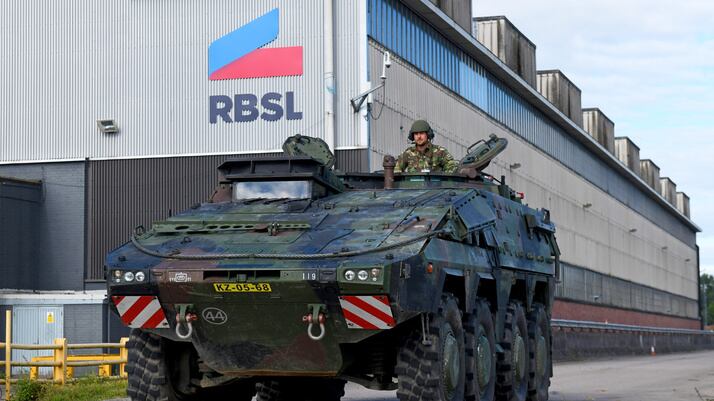LONDON and WASHINGTON — Changing battlefield priorities was one of the reasons behind the British Army’s decision to ditch the Warrior infantry fighting vehicle update program in the recent defense, security and foreign policy review, according to British Army chief Gen. Sir Mark Carleton-Smith.
Speaking to Defense News during a recent visit to Washington, Carleton-Smith, the Army’s chief of the general staff, said that divesting the aging vehicle frees up money to invest in other equipment that is a better fit for how the land component will fight going forward.
“We need to reimagine how the close battle is fought. And I think most close battles in the future are going to look and feel very much more like Mosul and Raqqa and Fallujah, than it is going to feel like the central European plain,” Carleton-Smith explained. “Therefore, the utility of an [Infantry Fighting Vehicle] in order to maneuver dismounted ground troops into fixed defensive positions, feels like less of a priority for me, against being able to operationally deploy infantry across large strategic distances quickly.”
The security review, released in March, axed plans to extensively upgrade the virtually obsolete Warrior, as the U.K. Army and the other armed services have embarked on a transformation policy towards the information age and away from traditional platforms.
Since 2011, Lockheed Martin UK has been leading the development effort to update Warrior with a new cannon and digitized turret, better protection and other improvements.
The upgrade program is now seven years late and more than £225 million ($319 million) over budget, with Lockheed pointing the finger at the MoD for much of the delay. Still, until the release of the security review, the program was expected to move forward pending government approval a more than £800 million ($1.1 billion) production deal to update around 275 vehicles.
Nixing the upgrade program has already had its industrial consequences; Lockheed has announced job losses at the Ampthill, southern England, site where it has invested in creating a turret center of excellence.
The company is also supplying General Dynamics UK with turrets for its Ajax armored reconnaissance vehicle fleet now in production for the British Army, and is casting around for opportunities to leverage its turret capabilities in other programs.
Carleton-Smith said that once the Army’s transformation agenda was taken into account, along with the competition for resources and age of the platform, killing off Warrior was quite a straightforward decision.
“It became really quite an easy decision. If we were going to get to true transformation, we needed to leave behind as many of the 20th century legacy systems [as possible] and Warrior fell precisely into that,” said the British general.
RELATED

The plan is for the Warrior to be taken out of service by the middle of the decade, as the wheeled Boxer 8x8 armored vehicle enters service. While Boxer isn’t a perfect like-for-like replacement, its ability to quickly travel long distances provides greater value than updating the Warrior, said Carleton-Smith.
The British MoD already has a contract with Boxer maker ARTEC to build more than 500 vehicles, with the extensive local supply and manufacturing effort being led by Rheinmetall BAE Systems Land and Krauss-Maffei Wegman’s U.K. subsidiary, WFEL.
Under the current contract, deliveries were scheduled to run for nine years starting 2023. The delivery tempo of just one per week, from two production sites, was labelled “astonishing” in a recent parliamentary Defence Committee report.
Carleton-Smith said the Army was now looking to raise the production speed and buy additional vehicles in the wake of the Warrior decision.
“The debate was, were we going to pour very scarce, precious new money into a platform that was going to be nearly 50 years old by the time we were fielding it? Or would it not be better, to take this moment to take it out of service, invest the money in new emerging capabilities, such as Boxer, buy more of them, and accelerate the production?” he said.
The MoD said recently it was looking at options to increase the lethality of some of its Boxer fleet with missiles or a cannon to better replace the lethality lost by ditching updated Warriors equipped with the CTAI 40 mm gun.
Andrew Chuter is the United Kingdom correspondent for Defense News.
Aaron Mehta was deputy editor and senior Pentagon correspondent for Defense News, covering policy, strategy and acquisition at the highest levels of the Defense Department and its international partners.






